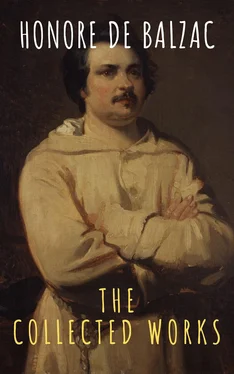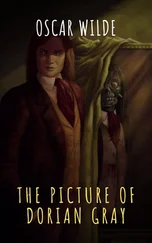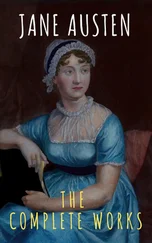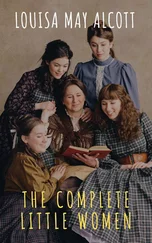Still, I may be allowed to point out how many irreproachable figures — as regards their virtue — are to be found in the portions of this work already published: Pierrette Lorrain, Ursule Mirouet, Constance Birotteau, La Fosseuse, Eugenie Grandet, Marguerite Claes, Pauline de Villenoix, Madame Jules, Madame de la Chanterie, Eve Chardon, Mademoiselle d’Esgrignon, Madame Firmiani, Agathe Rouget, Renee de Maucombe; besides several figures in the middle-distance, who, though less conspicuous than these, nevertheless, offer the reader an example of domestic virtue: Joseph Lebas, Genestas, Benassis, Bonnet the cure, Minoret the doctor, Pillerault, David Sechard, the two Birotteaus, Chaperon the priest, Judge Popinot, Bourgeat, the Sauviats, the Tascherons, and many more. Do not all these solve the difficult literary problem which consists in making a virtuous person interesting?
It was no small task to depict the two or three thousand conspicuous types of a period; for this is, in fact, the number presented to us by each generation, and which the Human Comedy will require. This crowd of actors, of characters, this multitude of lives, needed a setting — if I may be pardoned the expression, a gallery. Hence the very natural division, as already known, into the Scenes of Private Life, of Provincial Life, of Parisian, Political, Military, and Country Life. Under these six heads are classified all the studies of manners which form the history of society at large, of all its faits et gestes , as our ancestors would have said. These six classes correspond, indeed, to familiar conceptions. Each has its own sense and meaning, and answers to an epoch in the life of man. I may repeat here, but very briefly, what was written by Felix Davin — a young genius snatched from literature by an early death. After being informed of my plan, he said that the Scenes of Private Life represented childhood and youth and their errors, as the Scenes of Provincial Life represented the age of passion, scheming, self-interest, and ambition. Then the Scenes of Parisian Life give a picture of the tastes and vice and unbridled powers which conduce to the habits peculiar to great cities, where the extremes of good and evil meet. Each of these divisions has its local color — Paris and the Provinces — a great social antithesis which held for me immense resources.
And not man alone, but the principal events of life, fall into classes by types. There are situations which occur in every life, typical phases, and this is one of the details I most sought after. I have tried to give an idea of the different districts of our fine country. My work has its geography, as it has its genealogy and its families, its places and things, its persons and their deeds; as it has its heraldry, its nobles and commonalty, its artisans and peasants, its politicians and dandies, its army — in short, a whole world of its own.
After describing social life in these three portions, I had to delineate certain exceptional lives, which comprehend the interests of many people, or of everybody, and are in a degree outside the general law. Hence we have Scenes of Political Life. This vast picture of society being finished and complete, was it not needful to display it in its most violent phase, beside itself, as it were, either in self-defence or for the sake of conquest? Hence the Scenes of Military Life, as yet the most incomplete portion of my work, but for which room will be allowed in this edition, that it may form part of it when done. Finally, the Scenes of Country Life are, in a way, the evening of this long day, if I may so call the social drama. In that part are to be found the purest natures, and the application of the great principles of order, politics, and morality.
Such is the foundation, full of actors, full of comedies and tragedies, on which are raised the Philosophical Studies — the second part of my work, in which the social instrument of all these effects is displayed, and the ravages of the mind are painted, feeling after feeling; the first of the series, The Magic Skin , to some extent forms a link between the Philosophical Studies and Studies of Manners, by a work of almost Oriental fancy, in which life itself is shown in a mortal struggle with the very element of all passion.
Besides these, there will be a series of Analytical Studies, of which I will say nothing, for one only is published as yet — The Physiology of Marriage.
In the course of time I purpose writing two more works of this class. First the Pathology of Social Life, then an Anatomy of Educational Bodies, and a Monograph on Virtue.
In looking forward to what remains to be done, my readers will perhaps echo what my publishers say, “Please God to spare you!” I only ask to be less tormented by men and things than I have hitherto been since I began this terrific labor. I have had this in my favor, and I thank God for it, that the talents of the time, the finest characters and the truest friends, as noble in their private lives as the former are in public life, have wrung my hand and said, Courage!
And why should I not confess that this friendship, and the testimony here and there of persons unknown to me, have upheld me in my career, both against myself and against unjust attacks; against the calumny which has often persecuted me, against discouragement, and against the too eager hopefulness whose utterances are misinterpreted as those of overwhelming conceit? I had resolved to display stolid stoicism in the face of abuse and insults; but on two occasions base slanders have necessitated a reply. Though the advocates of forgiveness of injuries may regret that I should have displayed my skill in literary fence, there are many Christians who are of opinion that we live in times when it is as well to show sometimes that silence springs from generosity.
The vastness of a plan which includes both a history and a criticism of society, an analysis of its evils, and a discussion of its principles, authorizes me, I think, in giving to my work the title under which it now appears — The Human Comedy . Is this too ambitious? Is it not exact? That, when it is complete, the public must pronounce.
PARIS, July 1842
DEDICATION
To Mademoiselle Marie de Montheau
AT THE SIGN OF THE CAT AND RACKET
Half-way down the Rue Saint-Denis, almost at the corner of the Rue du Petit-Lion, there stood formerly one of those delightful houses which enable historians to reconstruct old Paris by analogy. The threatening walls of this tumbledown abode seemed to have been decorated with hieroglyphics. For what other name could the passer-by give to the Xs and Vs which the horizontal or diagonal timbers traced on the front, outlined by little parallel cracks in the plaster? It was evident that every beam quivered in its mortices at the passing of the lightest vehicle. This venerable structure was crowned by a triangular roof of which no example will, ere long, be seen in Paris. This covering, warped by the extremes of the Paris climate, projected three feet over the roadway, as much to protect the threshold from the rainfall as to shelter the wall of a loft and its sill-less dormer-window. This upper story was built of planks, overlapping each other like slates, in order, no doubt, not to overweight the frail house.
One rainy morning in the month of March, a young man, carefully wrapped in his cloak, stood under the awning of a shop opposite this old house, which he was studying with the enthusiasm of an antiquary. In point of fact, this relic of the civic life of the sixteenth century offered more than one problem to the consideration of an observer. Each story presented some singularity; on the first floor four tall, narrow windows, close together, were filled as to the lower panes with boards, so as to produce the doubtful light by which a clever salesman can ascribe to his goods the color his customers inquire for. The young man seemed very scornful of this part of the house; his eyes had not yet rested on it. The windows of the second floor, where the Venetian blinds were drawn up, revealing little dingy muslin curtains behind the large Bohemian glass panes, did not interest him either. His attention was attracted to the third floor, to the modest sash-frames of wood, so clumsily wrought that they might have found a place in the Museum of Arts and Crafts to illustrate the early efforts of French carpentry. These windows were glazed with small squares of glass so green that, but for his good eyes, the young man could not have seen the blue-checked cotton curtains which screened the mysteries of the room from profane eyes. Now and then the watcher, weary of his fruitless contemplation, or of the silence in which the house was buried, like the whole neighborhood, dropped his eyes towards the lower regions. An involuntary smile parted his lips each time he looked at the shop, where, in fact, there were some laughable details.
Читать дальше












